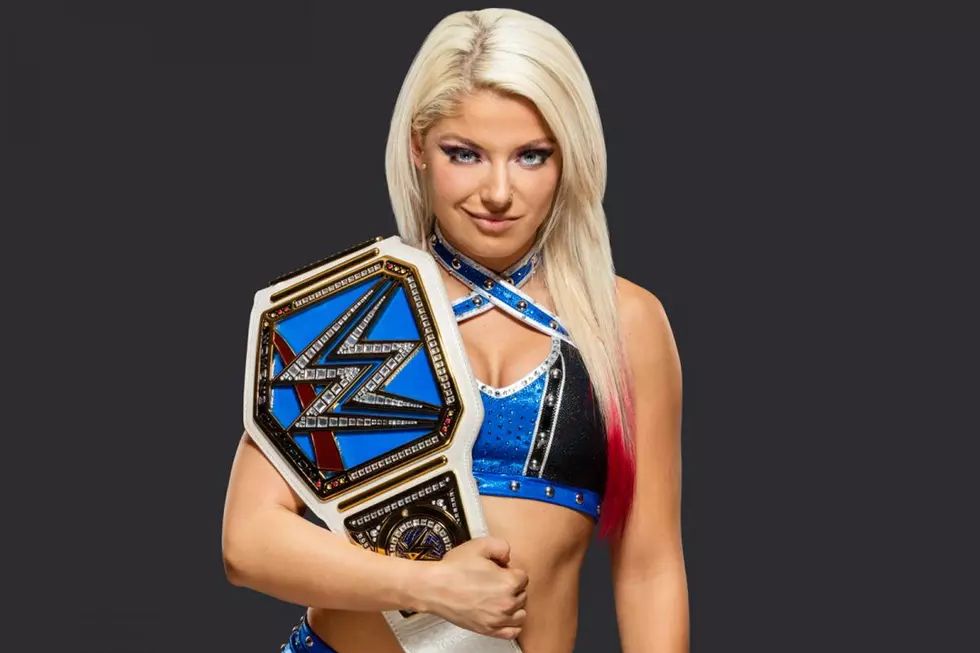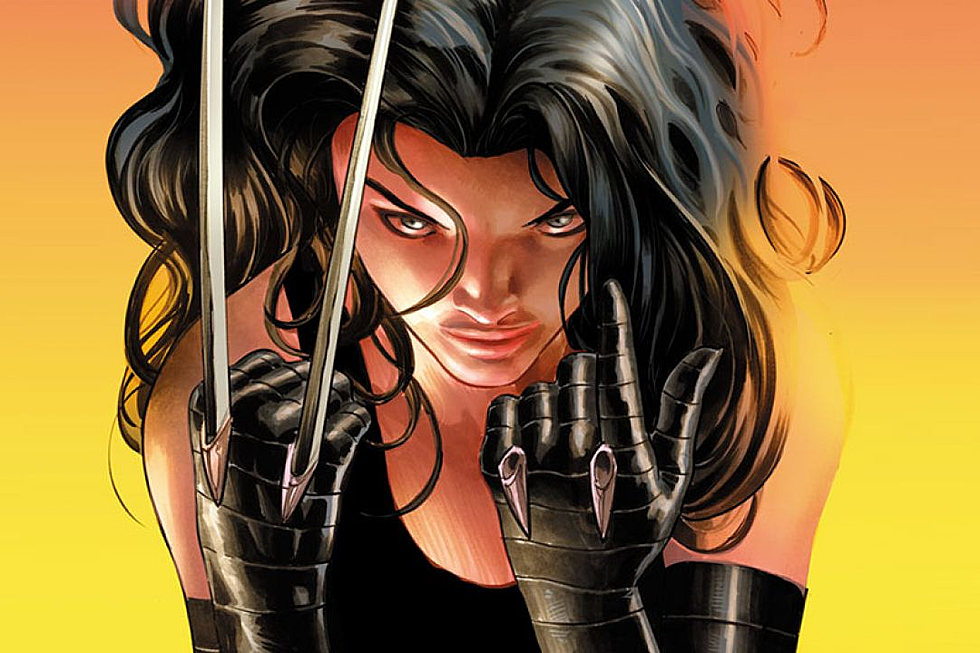![Dennis Hopeless On The End Of The Shield And The Rise Of Seth Rollins In ‘WWE’ #1 [Interview]](http://townsquare.media/site/622/files/2017/01/WWE_001_A_Main.jpg?w=630&h=968&zc=1&s=0&a=t&q=89&w=980&q=75)
Dennis Hopeless On The End Of The Shield And The Rise Of Seth Rollins In ‘WWE’ #1 [Interview]
While there have been many attempts to adapt the world of WWE, no-one has tried to fill in the gaps between weekly episodes of Raw and SmackDown, a gap in the market now filled by Dennis Hopeless and Serg Acuña's new WWE title at Boom Studios. With the first issue of the ongoing on sale today, ComicsAlliance chatted with Hopeless about adapting wrestling into comics, finding his place in established continuity and his relationship with WWE corporate.
ComicsAlliance: I want to start with a bit of an obvious question, but what was it about Seth Rollins that led to him being the protagonist of this first story?
Dennis Hopeless: I think more than anything it's that The Shield came out of nowhere, got super popular and then broke up, and those three guys went on to have unique, long-running storylines where they would interact with the whole universe and one another, and Seth's betrayal kinda started that rolling. One of the things that we had to figure out how to do from the very start was how to tell stories that take place in the existing continuity of WWE television, but also aren't running up against the changes that are being made and what their plans are for the future. We had to go back so it kinda made sense because that storyline happened two years ago, but it still has repercussions today that are current and interesting; by telling that backstory and fleshing out those stories, we're giving you stuff that is relevant now that also fills in this place in history.
CA: Was it always going to be Seth, or was there deliberation about which Shield member would lead the book?
DH: Yeah, The Shield storyline is three arcs. The first ac is all about Seth Rollins and his journey to becoming champion, his injury and the fallout of that. Then we kinda jump over to each member of The Shield. After that it'll be Dean and we'll follow him through the same period of time and show the different storylines that Dean Ambrose was going through. There'll be a tonal shift based on that superstar, too. Dean is a very different character from Seth Rollins, so trying to plot what kinda mischief he gets into is very different. After that, we'll jump over and do Roman Reigns. So yeah, it's a three arc, loosely tied-together Shield storyline, with focus on each superstar.
CA: When you're putting together a comic based on the weekly wrestling show, how much thought did you put into the idea or the possibility this could be someone's first exposure to WWE?
DH: Our goal was to try to do something that we could do better in a comic that they can do on television. It'd be very difficult to out-do WWE in in-ring stories and matches would be very difficult to do in 20 pages and compete with that. What we're trying to do is have a product that is new reader friendly but if you're interested in wrestling at all, or in the WWE superstar at all, we want to sell you on the characters. We want to sell you on the people who are fighting the fights and use the matches as the thing that builds the drama within that.
We definitely want it to stand alone for new readers, or people who are lapsed WWE viewers, or people who have been interested but never got into it; we want them to be able to pick it up and understand it. I think the best way to go about that is to make it very character-centric, and everything Seth's doing in the first arc is all character motivated. His wants and hopes and dreams are propelling him forward in a way that might be detrimental for him, but you understand who he is and why he's doing it. Then, we dance between the raindrops of the rivalries and the matches and the different things that happen on TV. I think it works both ways. It works to flesh out the characters and the reasons behind stuff we know and love from years ago but it's also a standalone story about Seth Rollins and what he's been up to.
CA: I'm interested in the idea that WWE TV is presented as a version of reality, but it's still fiction. How do you approach writing stories about "real" people that play fictional, dialed-up versions of themselves?
DH: This is the story that we're told for the most part on Raw, but you don't see them outside the ring. I think the challenge is, for me, showing the humanity behind that. I mean, yes, Seth Rollins is a larger-than-life character than the actual human being behind that role, but we can split the difference. We can show a human version of Seth and we can show the Seth that exists when he's alone and he's not on. It's obviously fiction and we're playing with the character, but I think we're able to flesh that out and make it interesting.
CA: In the WWE Universe, there are characters with supernatural backstories or abilities. Do you need to reconcile or consider any of that when trying to tell a grounded story in this universe?
DH: Yeah, tonally the book is a little more down-to-earth than the some of the wackier elements of WWE. At least at first we're avoiding that to some degree, we're trying to focus more on the lives of the characters which becomes harder to do when it becomes a straight up supernatural story. A lot of the previous WWE comics have focused more on supernatural stories or supernatural versions or elements, so we're trying to do something more like a television drama and less crazy supernatural stories.
CA: Is there much difference between scripting a fight scene in a superhero book and a fight scene in a wrestling comic? How do you collaborate with Serg Acuna to make the brawling feel authentic?
DH: It's a little bit different, because whilst WWE superheroes can be larger-than-life, they can be injured and we have a whole storyline where Seth gets hurts, because Seth got hurt. He couldn't wrestle for a period of time, so there's a human danger element that there often isn't with superheroes. Also, the science of WWE is a little bit more down-to-earth, so it's a lot more bare knuckles, bloody teeth kind of thing compared to superhero comics.
It's been a lot of fun to have humans fighting and figure out unique ways to do in-ring action in a comic book, because obviously watching a giant man and slam into someone is really interesting when it's a real person but we've all seen comic books where super crazy acts of physical strength happen so it's a little bit more difficult to be excited by a drawing of that. It's all about building the drama elsewhere and making that powerbomb really important to what's going on with the character, it's been a really fun challenge.
CA: When it came to writing these established characters, did you go back and watch the rise and fall of The Shield to get in the right mindset?
DH: Yeah, I went back and watched a lot of The Shield stuff. That was right when I was getting back in, so some of it was brand new to me and I didn't understand the concepts at the time, so I went back and watched a lot of it with context. There's also, particularly dealing with Seth's injury, there's that great WWE 24 documentary on the WWE Network about his road back, which I watched. Obviously that skirts the line a little bit more because it's less about the character a little bit and more about the guy, but that allowed me to flesh out who the characters are.
We also have different scenes and we're showing different parts of their lives. I wanted to have a really good handle on them so when I'm adding an element to the existing continuity, I wanted to show the reasons why. I wanted it to all fit, and make sense, and be in the voice of the characters as they exist in the minds of fans.
CA: I'm fascinated by the behind-the-scenes back-and-forth between licensor and licensee. What sort of relationship do you have with WWE as a corporate entity and how involved are they?
DH: My Boom editors are amazing and the notes that I get back from them --- because we get a round of those before WWE sees it and adds their own notes --- have kept me in line with what they understand WWE wants, and because of that we've got very few notes from them. Often times it's something like "Triple H wouldn't eat a muffin, he'd have coffee" or something like that, which is very simple and very easy to change. They have been absolutely fantastic with the story that we wanted to tell and the structure we wanted to tell.
CA: One thing I wanted to ask about in particular while I had the chance, is that when the comic covers Seth's victory at WrestleMania 31, he uses his current finisher The Pedigree, as opposed to the move he did use, The Curbstomp. There's a lot of talk about how The Curbstomp is "banned" now, so was this a specific change WWE requested?
DH: Yeah, that was a definitely a top-down decision. At the time it was happening, I was a big fan of The Curbstomp, so I would have written it that way. However, Seth's finisher is currently The Pedigree, so when he finishes someone in the comic he hits The Pedigree and I don't think it changes the scene fundamentally. Those of us that know, have a different memory but the scene still works and I'm fine with it.
CA: What sort of interactions or reactions have you had with wrestlers themselves? Have you got any feedback or a chance to talk to any of The Shield members?
DH: Not really, but there was a photo-op because I saw them all with the #0 issue but I would love that. It's tough because they travel all the time but I got to go --- when Raw was here was in Kansas City --- I got to go and sit in the front row and it was awesome. They're also taping a television show, so it's hard to meet people at that. I'd love to as it'd be fun to have a conversation, but it hasn't happened yet.
CA: Lastly, do you have plans for any stories or characters you'd like to cover after the three-arc Shield story? Do you have any other time periods you'd like to visit?
DH: The current plans only go to the end of the third arc, so it's a conversation we'd need to have. There's all sorts of stuff I'd like to cover, and my favorite character right now is Bayley, I'm a huge fan of the Women's Division in general. I think in the second arc we're going to have a little bit more room to get other superstars in, but going forward I'd like to do a Bayley story or a Four Horsewomen story. I really connected with those superstars and I think it'd be a lot of fun.
WWE #1 is available today at your local comic shop and digitally from Boom Studios.
More From ComicsAlliance
![Follow Daniel Bryan’s Journey To The WWE Championship In Boom’s ‘WWE: WrestleMania’ Special [Exclusive]](http://townsquare.media/site/622/files/2017/03/Mania00.jpg?w=980&q=75)




![‘WWE: Then Now Forever’ #1 Is Weird In All The Right Ways [Review]](http://townsquare.media/site/622/files/2016/08/WWE-Featured.png?w=980&q=75)


![Hopeless, Petrovich And More Launch ‘WWE’ Ongoing At Boom Studios [NYCC 2016]](http://townsquare.media/site/622/files/2016/09/WWE-Featured.png?w=980&q=75)
